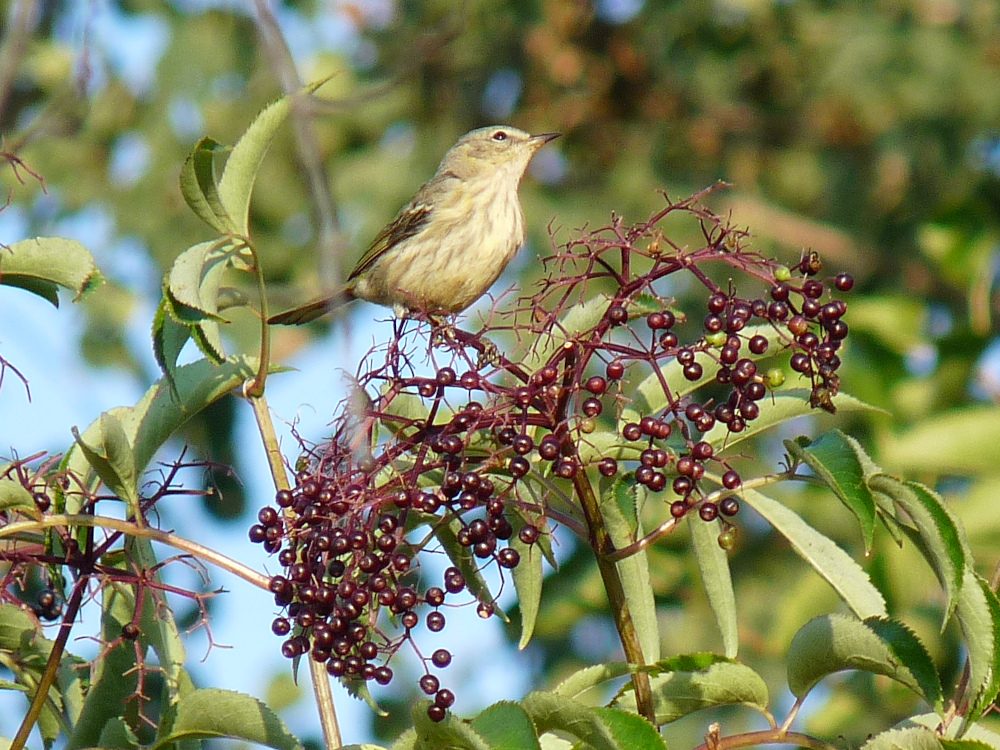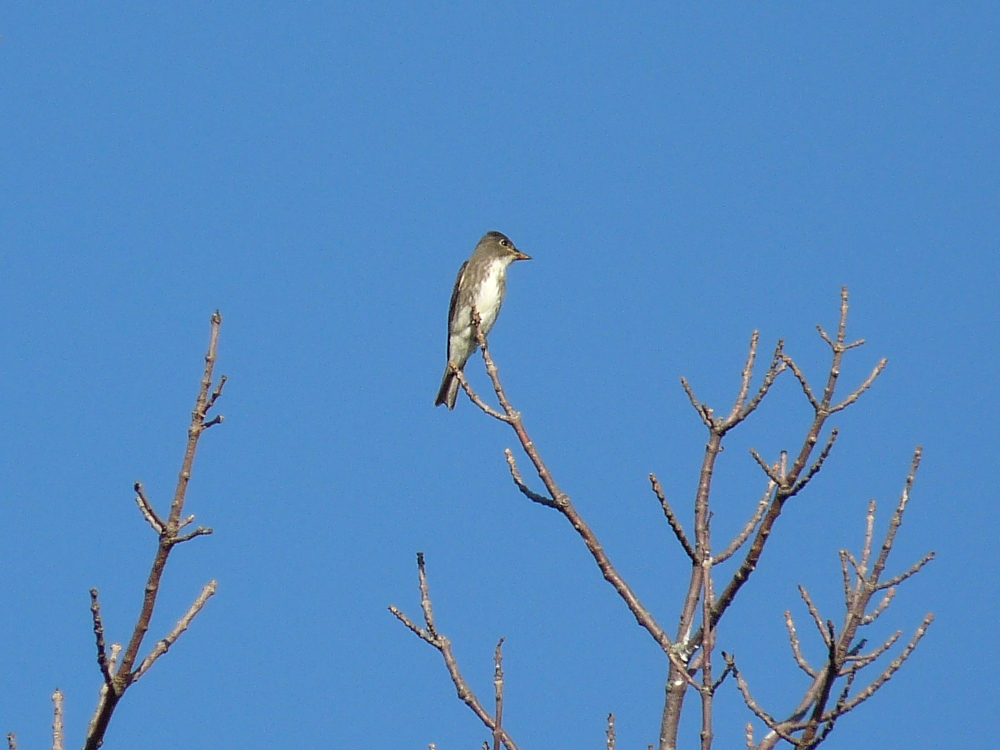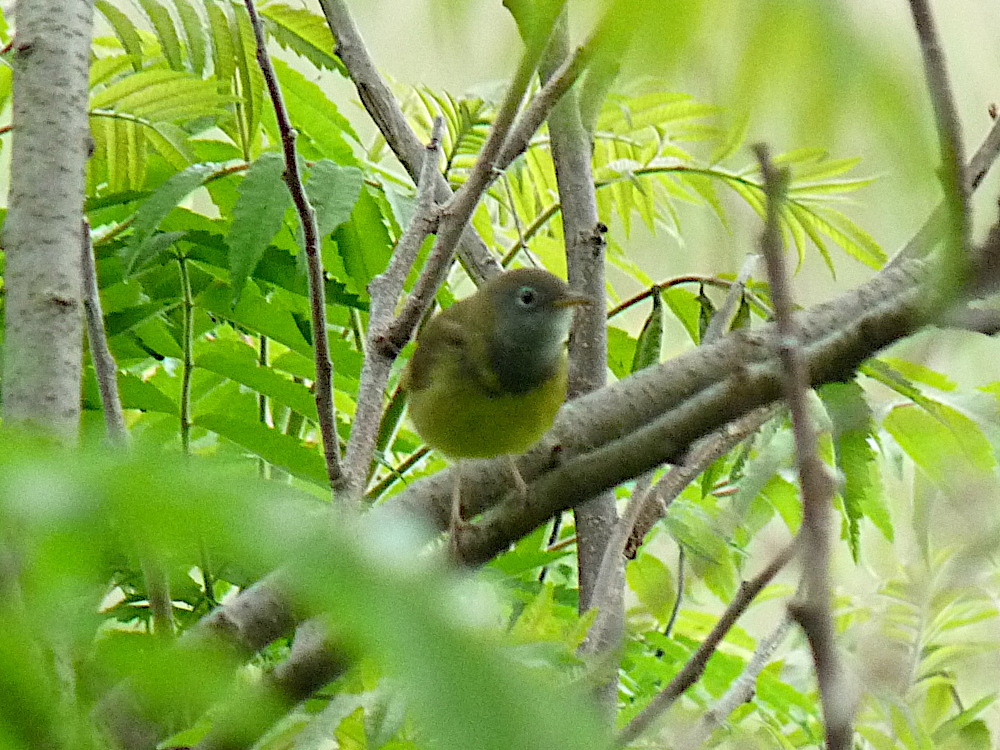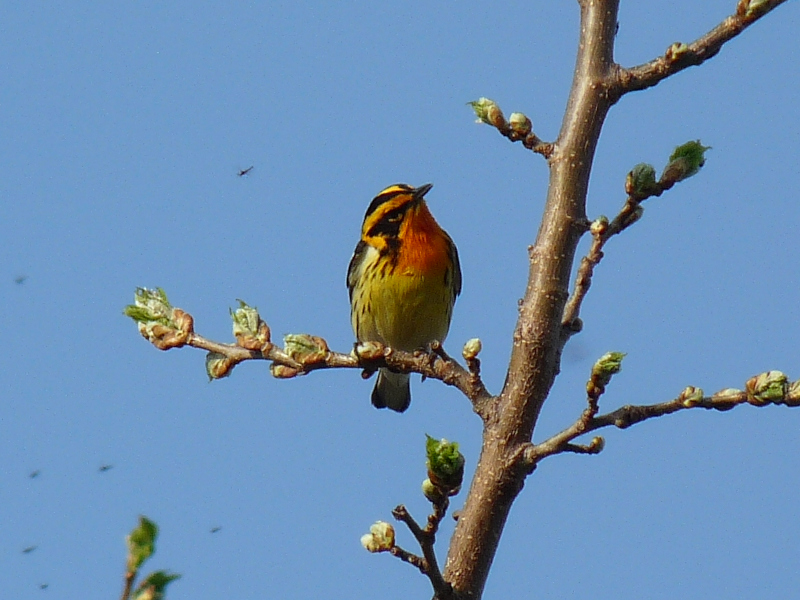Look at the Magnolia Warbler in the accompanying photo. Magnolia Warblers are normally found in trees but cold weather can force them to look for insect prey on the ground. This isn’t unusual – birds have to find food where they can and will adjust their behavior accordingly. The temperature on October 9, 2022, when I took this photo, was in the 50s and it was windy. These conditions reduce insect activity and make life more challenging for insect dependent birds like most warblers. The Magnolia Warbler wasn’t alone on that day. Numbers of hungry Yellow-rumped Warblers and Golden-crowned Kinglets were also down low, busily looking for food. Some of the Yellow-rumpeds were even feeding on the sand in the Dunes.
Tag Archives: Warblers
Elderberry Delight, Late August
It’s late August and Elderberry fruit are ripening. A variety of birds eat the juicy berries, including several warblers, vireos, thrushes, and House Finches. To find the berries and the birds, look for clusters of small, purplish fruit on shrub-like plants. The photo accompanying this post shows what the berries look like. The stand of Elderberry at the edge of the woods at the far southeast corner of the Point has been excellent for birds this August.
Early Migrant Passerines, August 17, 2022
We’re about a month from the peak of songbird migration but we’ve been seeing small numbers of warblers and flycatchers for a few weeks. This is typical and expected. Migration starts as a trickle and gradually gains momentum until the peak. Some of these early migrants include Least, Yellow-bellied and Olive-sided Flycatchers, Blue-gray Gnatcatchers, and Cape May, Bay-breasted, and Black-and-white Warblers among others. August is shorebird month but after you’re done checking the beach head up to the Magic Hedge for some early warblering.
More July Weirdness – Yellow-rumped Warbler and (pow!) Townsend’s Solitaire
July isn’t the most notable month for rarities at Montrose, but this July is proving to be the exception to that rule. On July 18 I found an adult male Yellow-rumped Warbler in full breeding plumage. I can’t think of a month less likely for Yellow-rumpeds in Chicago than July. Yellow-rumped Warblers nest in the northern United States and throughout Canada and that’s where they should be in July. Talk about an anomaly.
Even more anomalous than a July Yellow-rumped Warbler is a July Townsend’s Solitaire. On July 18 Mark Kolasa found one at Montrose. Townsend’s Solitaires are birds of the western United States and Canada and shouldn’t be anywhere near Illinois or the Midwest in July, though they are rare but regular visitors to our state in winter. This bird was seriously misoriented, but remember, the misoriented birds make birding magical.
Connecticut Warblers
Late May is prime time for Connecticut Warblers at Montrose. We’ve had multiple sightings so far this spring. The best way to find them is to listen for their loud, distinctive song. Two were at Montrose on May 26, and both were located because they were singing. Good recordings of Connecticut Warbler songs are on YouTube.
May 12, 2022 – Warblers
Continuing the migration splendor for the week, Thursday, May 12 was the best warbler day of the spring at Montrose. I ended up with 26 species, which is about as good as we do. If you were at Montrose on that day you couldn’t help but be impressed with the volume and variety of warblers. My best finds include
Worm-eating Warbler
Black-throated Blue Warbler
Blue-winged Warbler
Golden-winged Warbler (3)
Northern Parula (3)
Mourning Warbler
Canada Warbler
Of the regularly occurring warblers, Worm-eating is the rarest and least expected. In addition, the large numbers of Magnolia, Chestnut-sided, and Blackburnian were a joy to look at. We wait all year for a handful of days with color like this. Link to my eBird checklist for the day below.
eBird Checklist
May 12, 2022






